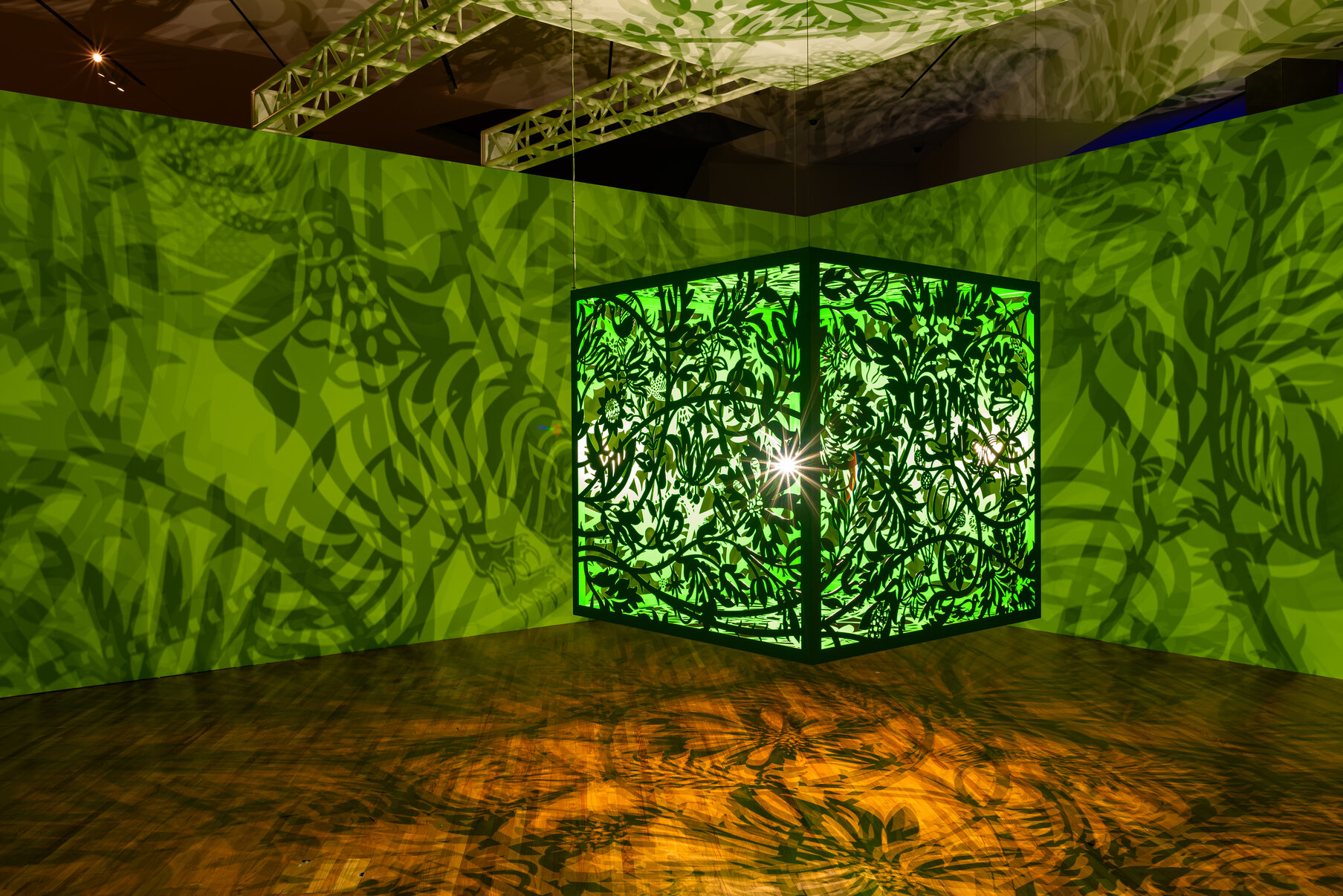by Steve Rockwell
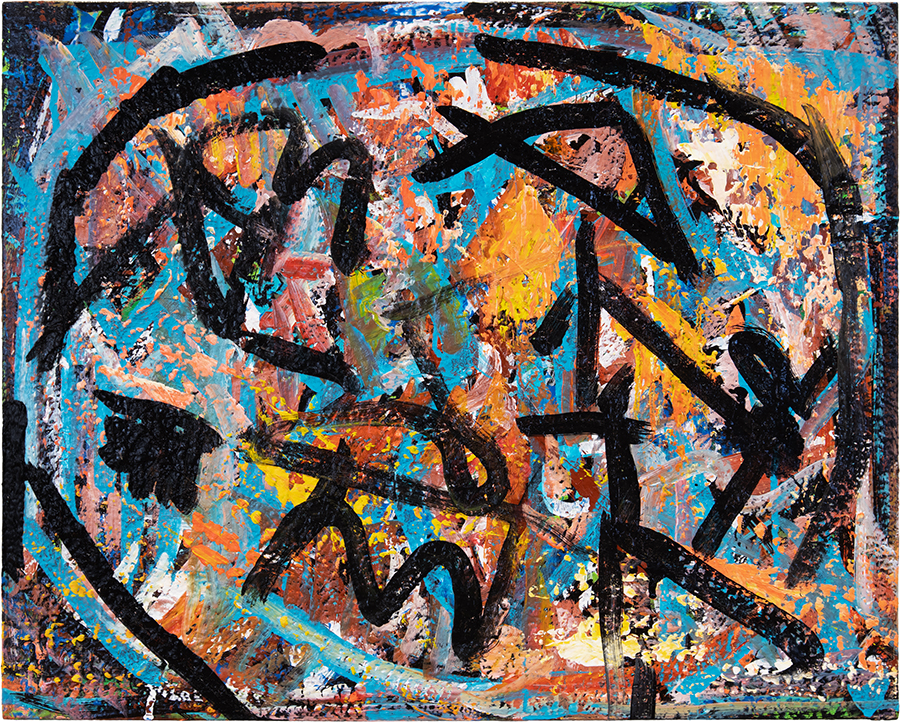
In his exhibition at the Christopher Cutts Gallery, Peter Templeman, having gone “Into the Void” returns here with the painted evidence of his journey. “Big Phase No. 5” (1997), an oil on canvas measures 72 x 84 inches, and the appropriately named acrylic on canvas “Wheel” (2022), at a mere eight inches square, serve as bookends to Templeman’s odyssey. The 2024 acrylic on panel, “Petroglyphs” have the qualities of an Egyptian cartouche, its “hieroglyphs” enclosed within their customary oval. Cryptic, yet conversely transparent, the panel amounts to an artist signature or seal, somehow punctuating his work as official – as if carved in stone.
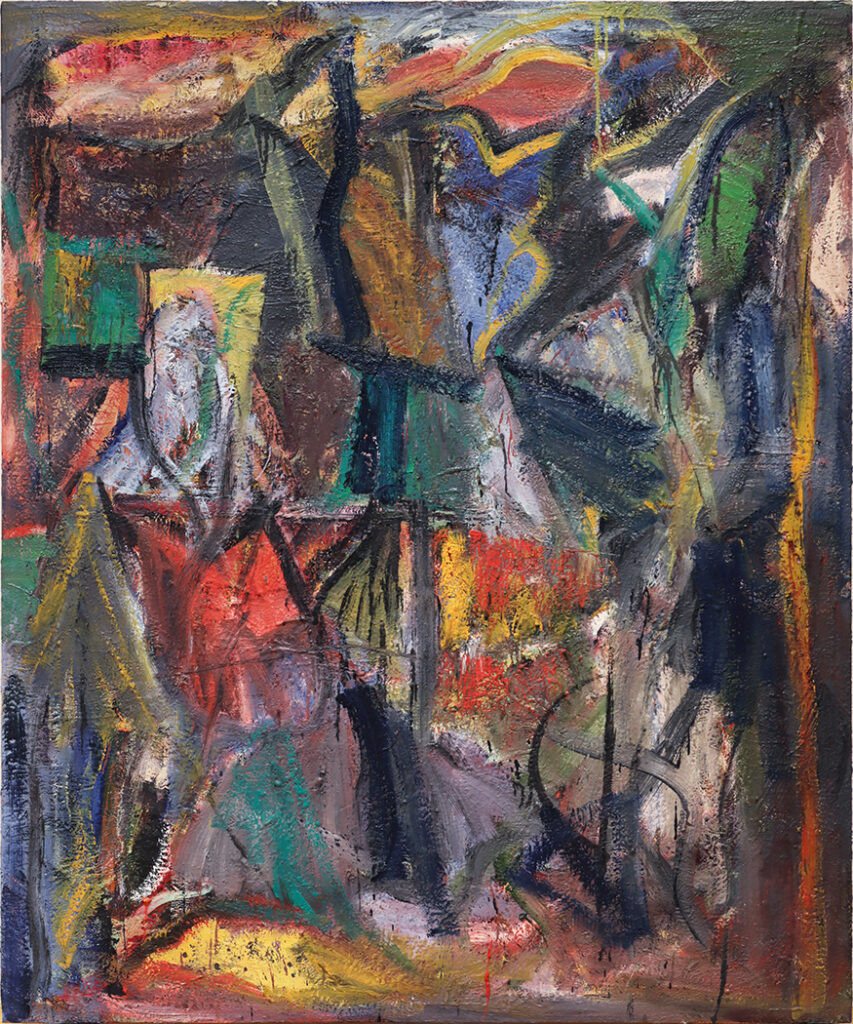
Centrepieces of the “Into the Void” works are four major paintings that Christoper Cutts acquired subsequent to a late 1990s visit to the artist studio. After decades in storage, these were combined and displayed here with contemporary works from Templeman’s studio. A visit by the artist by the artist to the Cutts Gallery this past winter tweaked a reminder of the stored works, thereby kicking its exhibition wheel into full gear. The “Phase Series (No. 2, No. 3, No. 4, and Big Phase No. 5)” are significant paintings in Templeman’s oeuvre. Besides their relative scale to the rest of the exhibition, they exemplify a successful synthesis of control and abandonment. Templeman’s painterly forays into his “void” divide variously into the more or less ordered. His “Paintings 1 – 9” as a group, paints the abyss as roiled chaos. His 2014 “Rocking on the High Seas” has the artist steering directly into the eye of the storm.
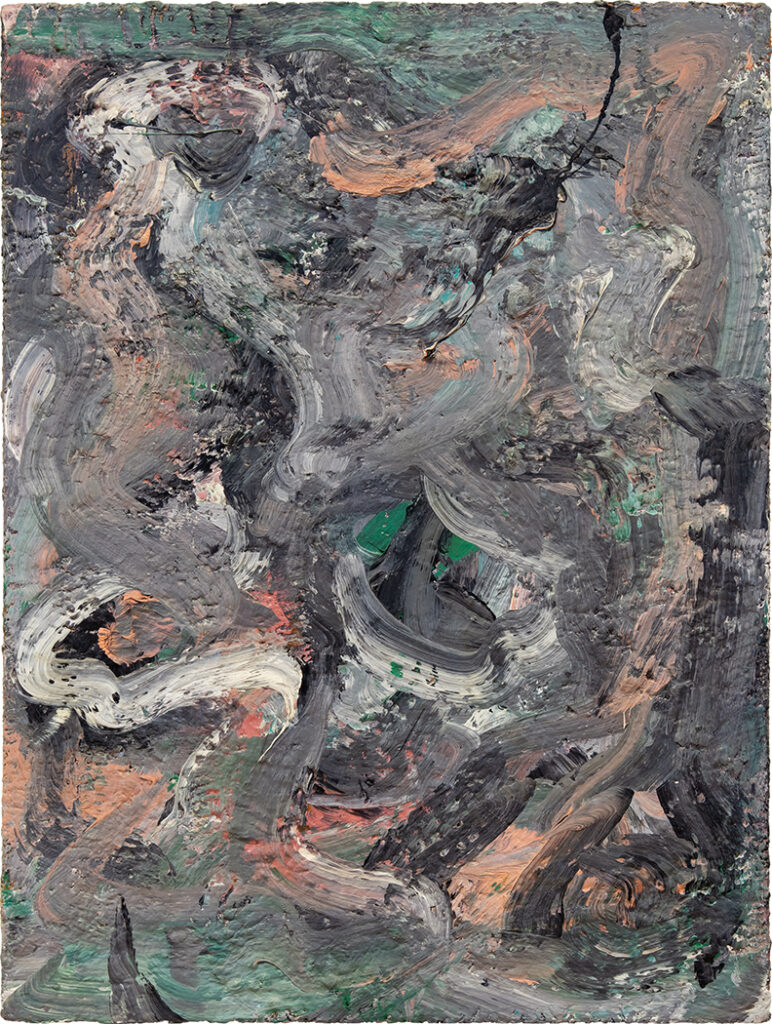
An unflinching resolve to go to the wall with each painterly outing is typical fare with Templeman. Relatively early in the artist’s career, the French Symbolist literature of Gide, Rimbaud and Beaudelaire, had primed the young artist to a receptivity of the unconscious realm. The “wall,” seemingly without exception here, is the dark unknown, against which every scumbled brush stroke gleams. In geologic terms, “Big Phase No. 5” may be seen as a motherlode, the artist’s repository of countless layers of paint. Their formation amounts to the congeal of phantasms into ever-shifting tectonic plates of pigment. Through a kind of alchemy, the deposit of everyday sight and sound minutiae is made precious in the act of having been made visible.
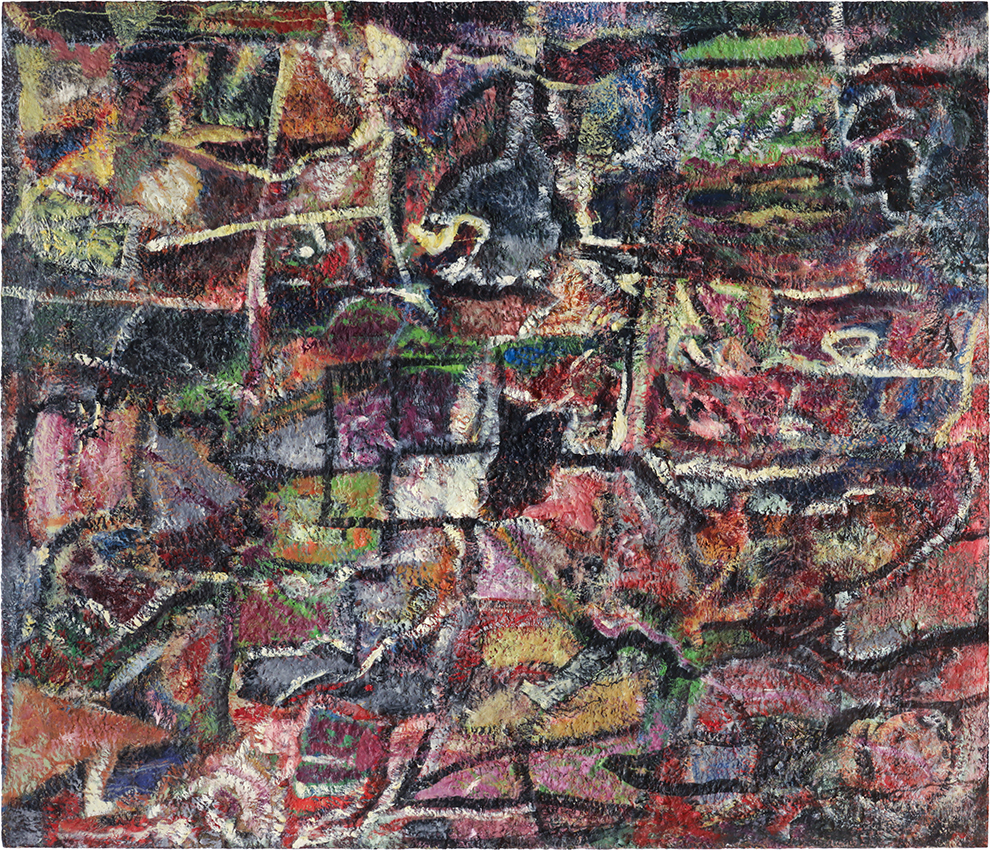
Templeman’s 2014 oil on panel ,”The Void,” features a window or portal. The viewer, once entered, is drawn into a vortex where tumult is the price of admission. The effect is one of tunnelling, amplifying a sense of dimension within dimensions. Here the artist is possibly throwing us the key to his creative “tripping,” with some of the GPS signposts along the way. Its loosely brushed “O” shape around the window hub might suggest the Greek last letter omega. Regardless, a sense of the cosmic is inferred with the artist stretching his craft to an existential limit. The 2015 canvasses such as “Top Knot” and “Physual” read as an interlacing of enigmatic glyphs. As syllabic utterances that coalesce, they exemplify the body of works where Templeman has tamed his tempests.
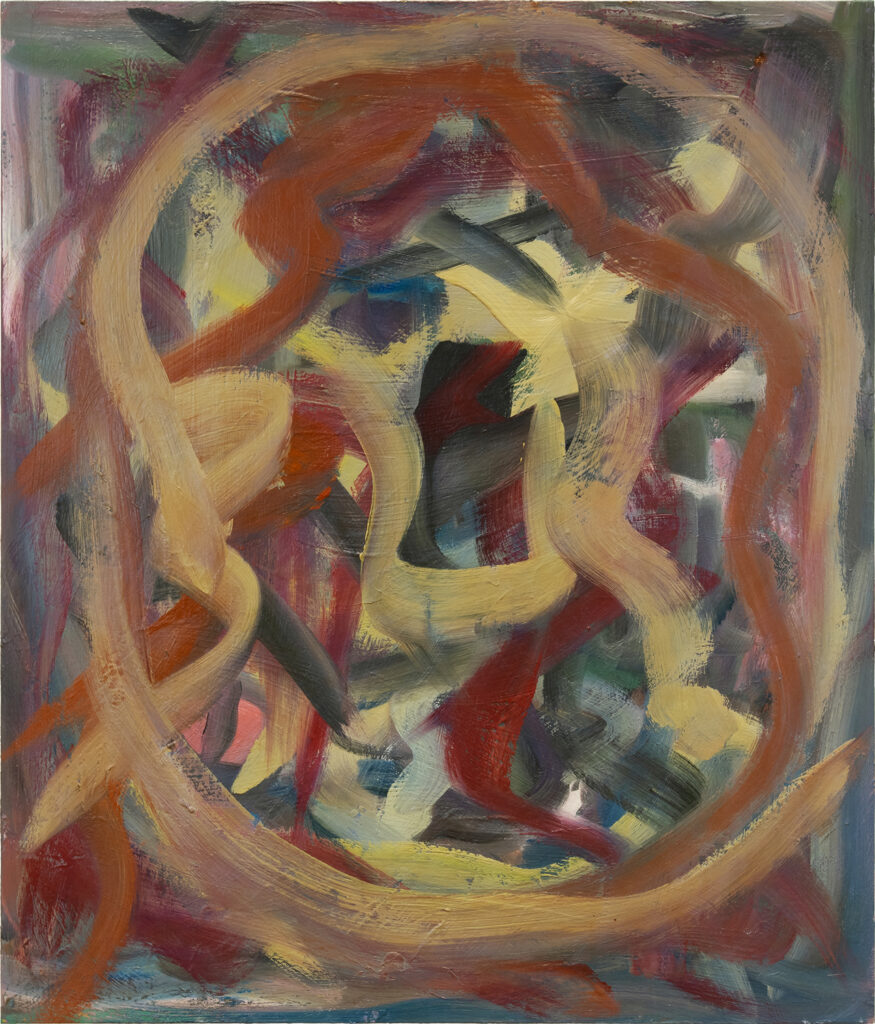
With a 50-year-long career and many artists of note that Templeman has rubbed shoulders with, a consistency of development and vision predominates. While Graham Coughtry had impacted the artist as a student, Toronto’s Three Schools of Art introduced him to the art of John MacGregor, who’s improvisational surrealist method provided a significant building block. Templeman’s now distinct brushed iconography is part of a connective abstract tradition that threads generations.
